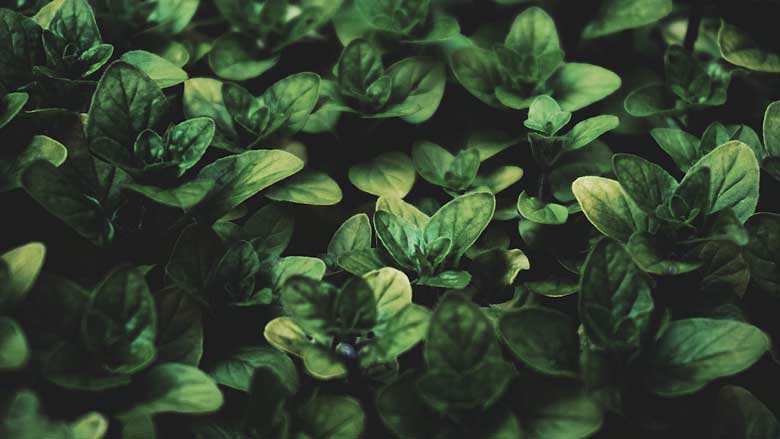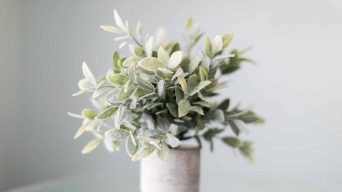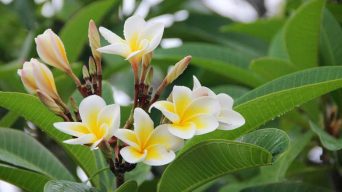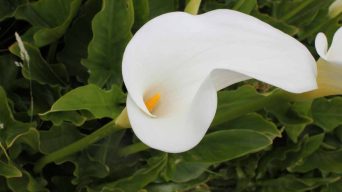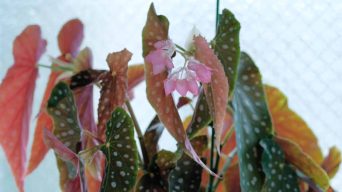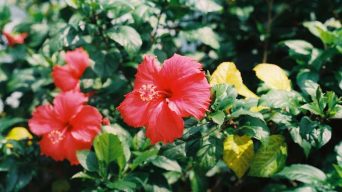Basil leaves turn yellow due to over/under-watering, lack of/prolonged exposure to sunlight, nutrient deficiencies, overfertilization, pest infestation, cold stress, soil issues, overcrowding, transplant shock, or natural aging. Adjust watering, ensure proper sunlight, fertilize appropriately, and manage pests and soil for healthy growth.
Basil (Ocimum basilicum) is a versatile and popular herb in culinary use, frequently referred to as garden-fresh parsley.
It is prized by gardeners for its robust, pungent flavor, enhancing dishes and serving as an attractive, edible garnish for salads, soups, and more.
Growing basil is generally straightforward, but its leaves can sometimes turn yellow, signaling issues such as diseases, pests, or suboptimal growing conditions.
Here are 10 potential reasons for yellowing basil leaves, along with their solutions:
Identifying and Treating Causes of Basil Plant Leaves Turning Yellow
Growing herbs at home is an effortless way to enhance your cooking with fresh flavors. These plants thrive with minimal maintenance and benefit from regular harvesting, promoting robust growth.
Typically, basil boasts vibrant green leaves. However, yellowing signals potential issues, such as overwatering, insufficient nutrients, or excessive direct sunlight, adversely affecting plant health.
Below, we explore common causes behind basil turning yellow and offer solutions:
1. Too Much Water
Overwatering is a frequent problem with basil plants, leading to yellowing and dropping leaves. This typically occurs when excess water in the soil suffocates the roots, blocking oxygen access.
Consequently, the roots may suffer from fungal and bacterial infections, causing root rot.
Should you notice wilting and yellowing, inspect the soil’s moisture level; it should be moist, not waterlogged.
Adjusting Watering Practices
- Allow the soil to dry completely before the next watering.
- Use a well-draining potting mix to prevent future overwatering.
- Basil requires regular watering, but ensure the soil dries out between sessions.
- To check moisture, insert your finger into the soil up to the first joint. Water only if the soil feels dry; postpone watering for a few days if damp.
- If overwatering persists, extend the interval between waterings or opt for pots with drainage holes to enhance soil drainage.
2. Not Enough Water
Basil leaves may become yellow due to various factors, with insufficient hydration being a primary cause. This yellowing of leaves is a clear sign that the plant is not receiving enough water.
Lack of adequate water leads to yellow and wilting of leaves. Basil stems, in particular, are highly sensitive to water shortages.
Even minimal dryness can cause leaves to become yellow and fragile, increasing their risk of breaking and damage.
Correcting Watering Practices
Fortunately, addressing watering issues with basil is straightforward.
Regular, proper watering ensures the plant receives sufficient moisture.
If you notice leaf yellowing, increase both the frequency and amount. To maintain optimal health, check the soil moisture at the pot’s base before watering, ensuring it never becomes too dry.
Water the plant at least once weekly, adjusting to more frequent watering as temperatures rise, to keep your basil thriving.
3. Lack of Light
Basil thrives in sunlight, requiring at least 6 hours of exposure daily.
A common issue for plants not receiving adequate light is the yellowing of their leaves.
This discoloration occurs because basil, like other green plants, needs chlorophyll to maintain its vibrant color, and insufficient light hampers chlorophyll production.
Improving Light Conditions
To remedy this, relocate your basil to a spot with more light.
For indoor plants, positioning them near south-facing windows maximizes sunlight exposure, ensuring they receive the necessary 6 hours of light.
However, be mindful that excessive direct sunlight can also lead to leaf yellowing, indicating the need for a balance in light exposure.
4. Too Much Light
While Basil needs much light to grow, too much sunlight can harm the plant as a clear sign of distress.
If plants are exposed to too much direct sunlight, their leaves will yellow.
This is because the plant is producing too much chlorophyll in an attempt to protect itself from the sun.
Balancing Sunlight Exposure
Balancing sunlight exposure is crucial to maintaining a healthy garden.
If your Basil is getting too much sunlight, move it to a shadier location.
Growing Basil indoors requires a shadier location, such as near an east or west-facing window where it will get indirect sunlight, as too much direct sunlight can cause the leaves to become scorched and the plant to wilt in the shade.
These plants need at least 6 hours of sunlight daily, so ensure the plant isn’t getting too much or too little light.
5. Nutrient Deficiencies
Basil plants can also suffer from nutrient deficiencies, which can cause their leaves to yellow.
The most common nutrient deficiency is nitrogen, but the plant can also lack other essential nutrients like phosphorus and potassium.
Several factors, including poor soil quality, incorrect fertilizer ratios, and inadequate watering, can cause a nutrient deficiency.
Rectifying Nutrient Imbalance
If you suspect your Basil is suffering from a nutrient deficiency, the best action is to get a soil test. This will help you determine which nutrients are lacking and how to amend the soil best.
You can also try using a nitrogen, phosphorus, and potassium fertilizer to help correct the nutrient deficiency.
They must be fertilized every 2-4 weeks during the growing season.
6. Overfertilization
While Basil need to be fertilized regularly, it’s important not to overdo it.
Overfertilizing these plants can cause their leaves to become yellow or brown.
This is because the plant is getting too much nitrogen, which causes the leaves to yellow. It can also cause the plant’s roots to burn, leading to leaves becoming brown and wilting.
Proper Fertilization Guidelines
If you think your Basil has been overfertilized, flush the soil with water to remove excess fertilizer.
You can also try moving the plant to a new container with fresh, unfertilized soil.
These herbs should be fertilized every 2-4 weeks during the growing season.
7. Pest Infestation
Basil can also be affected by pests, which can cause Basil to become yellow or brown.
The most common pests that affect these plants are aphids, whiteflies, and spider mites.
These pests suck the sap from plants, which can weaken the Basil and cause its leaves to yellow.
Pest infestations can also lead to Basil turning brown and wilting.
Effective Pest Management
If you think your Basil has a pest infestation, treating the plant with neem oil or an Insecticidal soap is best.
You can also try to remove the insects by hand. Use a cotton swab or a Q-tip dipped in rubbing alcohol to kill the pests.
To remove all pests from your plant, use a strong blast of water from a hose and pay special attention to the undersides of the leaves, as this is often where the pests hide.
8. Cold Weather
Basil plants are native to tropical climates and can’t tolerate cold weather, a crucial consideration for maintaining a healthy garden.
If exposed to temperatures below 50°F, their leaves will become yellow. Basil is shocked and trying to protect himself from the cold.
When the temperature drops below 50°F (10°C), it is important to bring them indoors or cover them up to protect them from the cold, as they are not frost tolerant and may suffer damage if exposed to temperatures below this threshold.
Protecting Basil from Cold
Bring it indoors and place it in a warm, sunny location if your Basil is exposed to cold weather.
Cover it with a frost blanket or burlap sack to protect it from the cold if you can’t bring the Basil inside.
You should keep them above 50°F at all times.
9. Basil Downy Mildew
Basil downy mildew is indeed a fungal disease that commonly affects Basil plants.
The pathogen Peronospora belbahrii causes it and is often characterized by the appearance of yellowing leaves.
As the disease progresses, the affected leaves may develop dark, purplish blotches and eventually turn brown or black.
Other symptoms may include stunted growth, curling of leaves, and a white, fluffy growth on the undersides of leaves.
If left untreated, downy mildew can cause defoliation and eventual plant death.
Preventing and Treating Downy Mildew
If your plant has downy mildew, the best action is to remove all affected leaves.
Destroy any infected leaves that you find to prevent the fungal infection from spreading.
Fungicides and cultural practices such as proper plant spacing, adequate air circulation, and watering at the base of the Basil can help control the spread of the disease.
Additionally, planting resistant basil varieties can also be an effective preventive measure.
10. Potting Soil Issues
Basil plants need well-draining, nutrient-rich soil to thrive.
If they are grown in potting soil that’s too dense or doesn’t have enough nutrients, their leaves can become yellow.
The best way to avoid this issue is to use a high-quality potting mix for Basil.
You can add some organic matter to the soil to improve drainage and nutrient content.
How to Manage Issues with Potting Soil
If your Basil is grown in potting soil that’s too dense or doesn’t have enough nutrients, repot the plant in a high-quality potting mix.
You can add some organic matter, such as compost, to the soil to improve its drainage and nutrient content.
Basil needs well-draining, nutrient-rich soil to thrive, so provide them with the best growing conditions possible.
11. Overcrowding
Basil plants need room to grow and should be planted in individual pots.
When plants in an overcrowded environment don’t have enough air circulation, they can become stressed, and their leaves can become yellow due to the competition for space, light, and nutrients.
Overcrowded plants will also produce fewer leaves and flowers.
How to Address Overcrowding
If your Basil plants are overcrowded, repot them in individual pots.
Be sure to provide each plant with enough space to grow.
Plants need room to breathe and should be planted in separate pots.
12. Transplant Shock
Basil can go into shock when they are transplanted, a common phenomenon in gardening. This is a normal reaction and nothing to worry about.
When transplanted, a plant may experience stress due to environmental changes, such as temperature, light levels, or soil conditions.
As a result, the plant may exhibit symptoms of shock, including yellowing. However, Basil should recover and resume healthy growth with proper care and adjustments to the new conditions.
Helping Basil Recover from Transplanting
If your Basil is experiencing transplant shock, give it time to adjust to its new environment.
Plants need time to acclimate to their new surroundings and usually recover within a few days.
Be sure to water the Basil regularly and keep it in a warm, sunny location.
13. Natural Yellowing Leaves
It’s normal for Basil to become yellow as they age, a process often observed as the plant focuses its energy on supporting new growth.
This natural yellowing occurs because plants always produce new leaves, and the older ones, having served their purpose, will eventually become yellow and die off.
This cycle ensures the plant remains vigorous, with the older, yellowing leaf allowing fresh, vibrant growth.
As long as the Basil plant is healthy and happy, it will continue to produce new leaves, maintaining its lush, green appearance amidst the occasional yellow leaf.
Dealing with Natural Leaf Yellowing
There’s no need to fix yellowing due to age.
Just remove the affected leaves and dispose of them.
Basil will continue to produce new leaves, so don’t worry about the Basil losing its foliage.
Dealing with Yellow Basil Plants With Brown Spots
Basil can become yellow with brown spots due to several different reasons.
Basil downy mildew, nutrient deficiencies, and herbicide damage are common causes of the plant turning yellow with brown spots.
When diagnosing the problem, it’s essential to look for other symptoms that can help narrow down the cause.
- Due to herbicide damage, yellow leaves with brown spots will also have a burnt or scorched appearance.
- Due to nutrient deficiencies, leaves turning yellow with brown spots often have pale green or yellowish-green leaves.
- Downy mildew will cause the leaves to become yellow and brown and appear powdery or fuzzy.
Treating Yellow Basil Leaves and Curling
A variety of factors can cause basil leaves to turn yellow and curl.
Basil downy mildew, heat stress, and pest infestations are common causes of yellow Basil leaves and curling.
When diagnosing the problem, it’s essential to look for other symptoms that can help narrow down the cause.
- Leaves turning yellow and curling due to downy mildew will also have a powdery or fuzzy appearance.
- Plants experiencing heat stress will often have wilted or drooping leaves.
- Leaves infested with pests will have small holes or chewed edges.
Handling Yellow Basil Leaves with Black Spots
Basil leaves can become yellow with black spots for several different reasons.
It is a very sensitive plant; even minor environmental changes can cause Basil to become yellow with black spots.
A lack of water is the most common reason for yellow leaves with black spots.
Leaves will also become yellow if the Basil is not receiving enough water or being overwatered.
Should Yellow Leaves Be Removed?
If you have a basil plant, you may notice that the leaves become yellow. While this is a common problem, it can be frustrating to see your plant suffer.
So, should you remove yellow leaves from basil plants?
The answer is yes and no. If the leaves are only slightly yellow, you can still use them for cooking.
However, if the leaves are very yellow or starting to brown, it is best to remove them. This will help the Basil focus its energy on producing healthy new leaves.
If you decide to remove yellowing leaves, be sure to do so gently. These leaves are delicate and can easily be damaged.
Use sharp scissors or pruning shears to make clean cuts. These herbs are resilient, so don’t be afraid to trim them back.
Final Thoughts
With the right ingredients, such as adequate sunlight, nutrient-rich soil, regular watering, and proper care and attention, you can provide your basil with the essential elements it needs to thrive in your gardens.
Engaging in gardening ensures the vitality of your plants and brings a sense of fulfillment as you nurture them from seedlings to full bloom, eventually integrating them into your food.
Soon enough, you will be rewarded with a lush, green, and healthy Basil.
However, basil can become yellow for various reasons, often due to a lack of nutrients or excessive watering.
They also require well-draining, nutrient-rich soil to thrive.
If your Basil leaves become yellow, try one of the above mentioned solutions.
With some care and attention, you can return your basil to its green and healthy state in no time.

